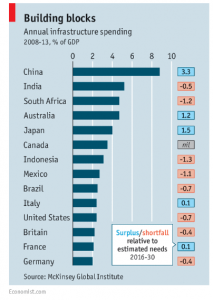Recently, I discussed why a private investment in building the Seattle arena made sense for the major parties involved (especially the citizens). I have been involved in many heated discussions about why public investments in arenas/stadiums are very frustrating but won’t get to deep into that right now. The main conclusion is that either the city that has the team will cough up the money or the owner will relocate to a different city since the city officials are willing to pay the cost of having the team. The owners will always have the power to have public investment unless there is an ideological statement about privately funding like Stephen Ross, the owner of the Miami Dolphins in the National Football League (NFL). That was some rambling there, but it’s a very important subject as it has been seen to affect even education in Nevada since the state is cutting the education budget and making classes bigger just to finance the stadium that will host the incoming Oakland Raiders.
Lets get back on track. The Economist inspired this post based on an article about when funding infrastructure privately is viable. This is for general infrastructure like roads, not specific ones like arenas or stadiums like discussed above. One of the main points made in the post was that if the privately funded infrastructure is done right, the users of the infrastructure will benefit from the innovation and efficiency associated with the infrastructure. However, there were three points made against privately funded infrastructure.
The first point made against it is public opposition. Generally, privately funding infrastructure can come with concern, however there are some exceptions.
Britain seems fairly relaxed about private water companies but is cool on privately run toll roads. In contrast, private toll roads are a feature of Australian life but water privatization remains controversial. A lot depends on what the public has become used to. It is typically more comfortable with the private ownership of telecoms and electricity assets, which is established, than with highways. Yet cable and power networks are at least as critical as roads, perhaps more so.
The second point made is about politicians involved in public vs. private infrastructure funding. Politicians obviously want to give the public what they desire the most and if there is any opposition to private funding, they could avoid the project because they don’t want to lose their job. This is something to keep in mind even if it makes economic sense to go forward with the project in a situation.
The third point made is about making sure everyone agrees about the structure of the deal. If everyone does not agree, then it could affect the funding and the politicians involved down the road. The Economist offers many options in ways to fund infrastructure publicly.
There is a spectrum of procurement options. At one end are projects financed from taxes. For instance, last year Los Angeles voted to raise its local sales tax by 0.5% to pay for infrastructure. At the other end are private projects, such as London Gateway, a deepwater port on the Thames built by DP World, a Dubai-based port operator. Crossrail, a massive project in London (pictured on previous page), is an example of another sort of hybrid, where the asset is built by the private sector, but ownership remains public. The right procurement model depends on the individual project, says Mr. Rose. Ultimately, however, the taxpayer pays, whether in taxes, fares, tolls or bills.
There are many different options, but as the quote outlines, the taxpayers are usually on the hook for it. It’s important to keep in mind everyone involved in the transaction as infrastructure will always be important to countries around the world. One of President Trump’s main campaigning factors was funding an infrastructure plan at about one trillion. As the presidency move forward in funding it, it will be interesting to see what route they take. A graphic below looks at investment around the world in infrastructure.

